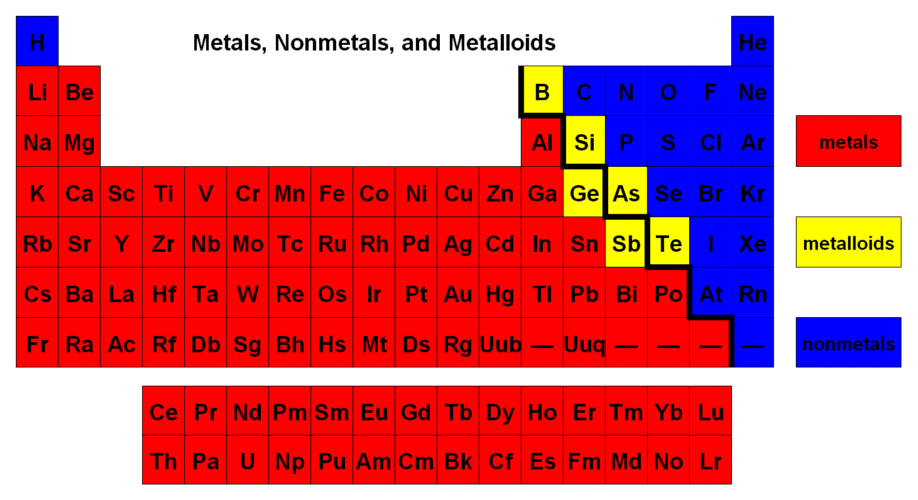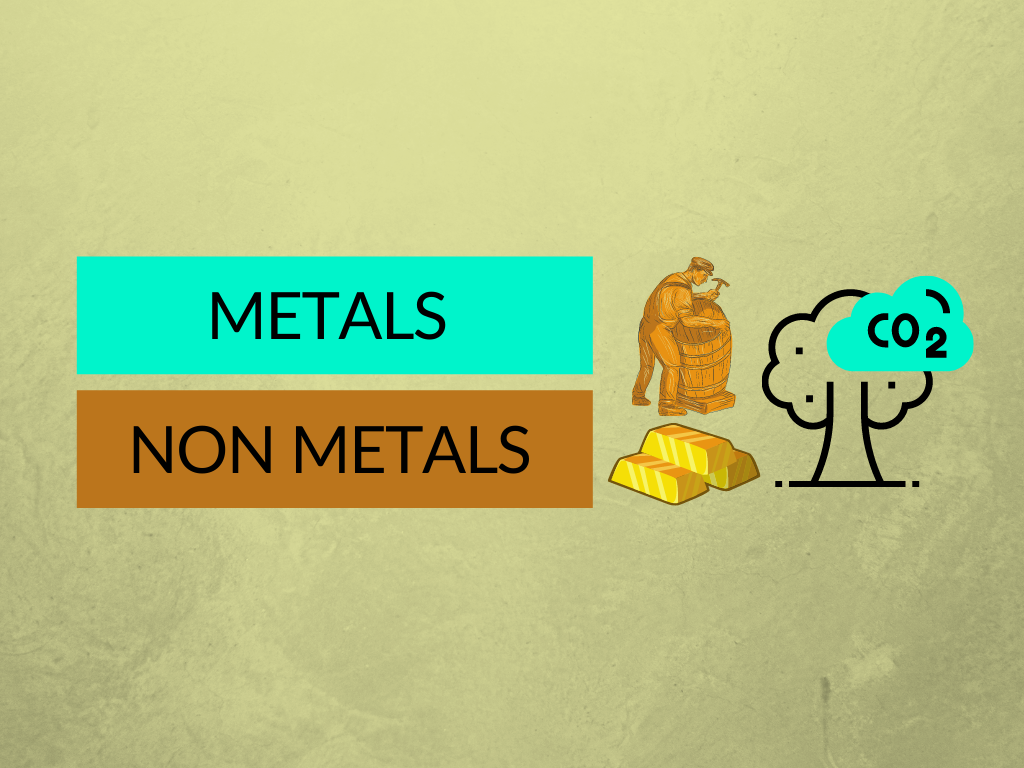Heat and electricity do not conduct well through non-metals. There are few materials that conduct electricity well except graphite. It is possible to polish metals to make them lustrous. The Major Difference Between Metals and Non-Metals is Detailed below
What are metals
Almost all the elements in the periodic table are metals. Such as alkali metals, transition metals, lanthanides, actinides and alkaline earth metals. Metals are separated by non-metals on a periodic table through a zigzag line from carbon, till radon. The elements between the metals and non-metals are phosphorus, selenium and iodine. The elements to the right of them are non-metals and the left of the line are metalloids or semimetals and have properties intermediate between those of the metals and non-metals.
What are Non Metals
As the major part of the periodic table contains the metals a few elements in the periodic table are non-metals. These are seen on the right side of the periodic table. Elements of non-metals are sulphur, carbon, all halogens, phosphorus, hydrogen, oxygen, selenium, nitrogen and noble gases.
In the periodic table, non-metals are placed left of the halogens and to the right of the metalloids. Although noble gases and halogens are also non-metals, these elements are often referred to as non-metals.
Difference Between Metals and Non-Metals
| METALS | NON METALS |
|---|---|
| Majority of the elements in the periodic table are the metals | Few elements in the periodic table are termed as the non-metals |
| STATE OF APPEARANCE | |
| Metals are those solids at the room temperature except the mercury | Non-metals are all the three states that is solids, liquids, and gas |
| HARDNESS | |
| Most metals are termed as hard except sodium | Most if the nonmetals are termed as soft except diamond |
| DENSITY | |
| Metals has a high density | Non-metals generally has a low density |
| CONDUCTION | |
| Metals are good at the conduction of the heat and electricity | Non-metals are bad and poor in the conduction of the heat and |
| MALLEABLE | |
| Metals are malleable | Non-metals area non malleable |
| LUSTROUS | |
| Metals appears as lustrous | Non-metals appears as non-lustrous |
| SONOROUS | |
| Metals are sonorous | Non-metals are non-sonorous |
| EXAMPLES | |
| Gold, copper, silver, sodium, magnesium | Nitrogen, oxygen, sulfur, chlorine, neon |


Conclusion
Hence we conclude the Difference Between Metals and Non-Metals as Metals and non-metals are those the elements which are seen in the periodic table both having their importance and uses and both differ from each other the metals are termed as good conductors of heat and electricity generators whereas non-metals not and the metals appear as lustrous means they shine. Non-metals are non-sonorous and are in the electronegative structure. Metals are like alkali metals, transition metals, lanthanides, actinides and alkaline earth metals and Elements of non-metals are sulphur, carbon, all halogens, phosphorus, hydrogen, oxygen, selenium, nitrogen and noble gases
More Related Readings
Difference Between Food Chain and Food Web
Difference Between Antigen and Antibody


